6+ Sample Grant Project Proposal
-
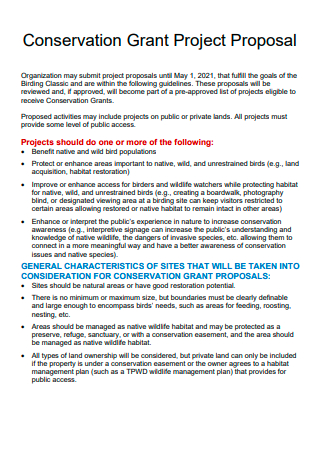
Conservation Grant Project Proposal
download now -
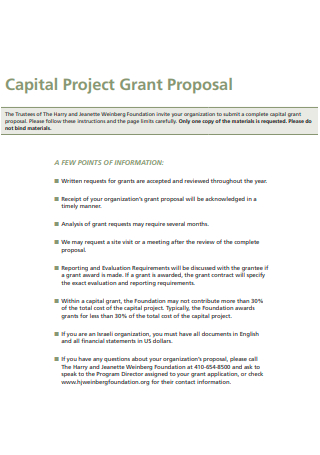
Grant Capital Project Proposal
download now -
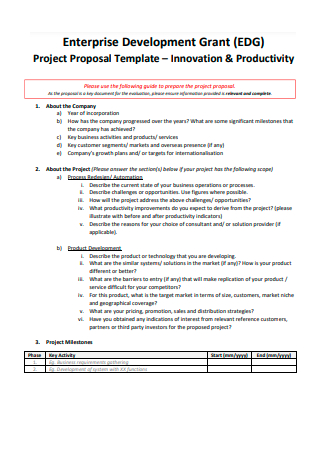
Enterprise Development Grant Project Proposal Template
download now -
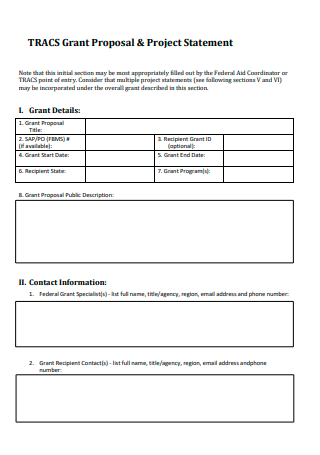
Grant Project Statement Proposal
download now -
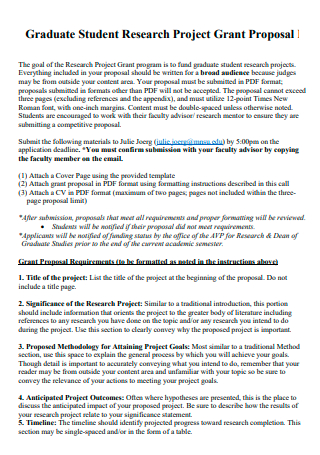
Graduate Student Research Project Grant Proposal
download now -
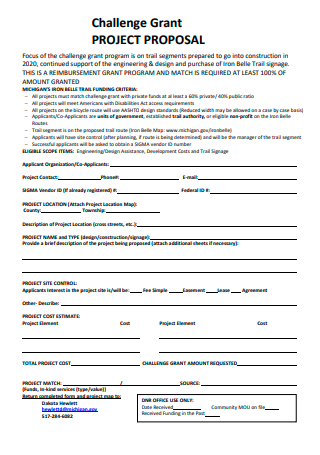
Challenge Grant Project Proposal
download now -
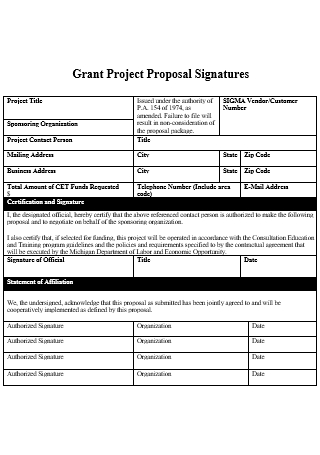
Grant Project Proposal Signatures
download now
FREE Grant Project Proposal s to Download
6+ Sample Grant Project Proposal
What Is a Grant Project Proposal?
Important Parts of a Grant Project Proposal
Different Examples of Grants
How to Write a Project Grant Proposal
FAQs
Are there word count limits for writing a grant?
What if my project grant proposal is rejected?
Who should be on the project grant writing team?
What Is a Grant Project Proposal?
First of all, what does a grant mean? To put it simply, a grant refers to a quantity of money, usually a financial reward or assistance, that is given by the government or another organization for the purpose of funding a project, usually ones that are requested by charitable organizations. Even though the grantee is not required to reimburse the money after a certain period of time, there are some cases wherein grantees of abandoned projects are required to repay the money since there was no end product being realized.
What is a grant project proposal? It simply refers to a proposal document that is a request for funding for a non-profit or for-profit initiative. Although grant submissions are hardly a safe bet or a solution to a financial issue, they do play a part in assisting most organizations. On the surface, grant proposals appear to help solely the organization or individual entrepreneur in need of funds, but that is not usually the case. Despite the fact that grant submissions are connected with charity organizations, most charities attempt not to rely entirely on grants since they are time-bound and limited in scope.
Important Parts of a Grant Project Proposal
Here are the important types of information that you should include when you draft a grant project proposal:
Different Examples of Grants
Listed and discussed below are some of the different types of grants that exist:
- Start-up Grants – This type of grant is useful for starting something new, such as an organization, hence the term “start-up”. Funds in this grant are given for a certain amount of time, during which the entity is being developed. After that certain period, the project is now expected to run by itself without any external help, which can be done through different intra-organizational activities.
- Technical Assistance Grants – This type of grant provides grant money for the purpose of helping administrative functions of a non-profit group. The funds in this type of grant serve as cover for the overhead costs of running the group.
- General Purpose Grants – Easily explained, this type of grant serves as general financial support. The funds in this grant can be used in whatever ways that are considered to be applicable by the organization. Examples of ways that a general-purpose grant can be used include funding for operating expenses, programs, projects, or any other needs.
- Facilities Grants – The funds in this type of grant are used by organizations for building and maintaining the required facilities for their programs and services, as well as to obtain the necessary tools/equipment. This grant may cover the entire budget that is needed by the organization or only a part of it.
How to Write a Project Grant Proposal
After thorough research and planning, your organization has now arrived at the point where it needs to kickstart its operations. The problem is, where would you acquire funds? Well, to acquire them, writing a project grant proposal would be a start. With that being said, here are the steps to follow when writing one.
-
1. Writing the Cover Letter
As this is what the readers will notice first when the proposal is submitted, it is important that this should be done properly in order to make a good impression. Your cover letter is the ideal opportunity to attract the funder’s interest and get him/her going for the rest of the proposal. It also provides the best opportunity to draw the reader’s attention to your project proposal. When writing this portion of the proposal, it is critical to keep everything brief and straightforward, to tell the readers what you truly need for the project, and to establish a link between the possible sponsor and your idea.
-
2. Summarize the Project and Needs
Every project grant proposal needs to start with a summary. This is practically a synopsis of the proposal, which includes your organization, your market segment, and your project goals. When writing this part of the proposal, it is important to introduce your organization to the potential sponsors and explain how you will spend the funds. It is also important to get to the point quickly while being factual in the process. As it is only a summary, it is important to not give away too much information in this section.
-
3. Introduction and Needs Statement
After providing a brief summary, now is the time to write the introduction of your proposal and the corresponding needs statement. In introducing your organization, you must demonstrate that it has the capacity and ability to accomplish all deliverables, not just from an execution standpoint, but also from a legal, safety, and quality one. In writing the needs statement, extensive research is recommended. The research process includes the history of the problem in your community and explanations as to why this project might make a big difference. The key here is also to highlight urgency.
-
4. Goals and Objectives
After providing the introduction and needs statement of the proposal, get straight to explaining the goals and objectives of the project grant proposal. One thing to remember in this step is that you should write the details concerning the desired outcome of the project and how the success of it is going to be measured. In writing this section, keep in mind that the objectives should be SMART. What does it mean? It simply means that it should be Specific, Measureable, Attainable, Realistic, and Time-bound. This section will also detail important information concerning the benefits that the beneficiary of the grant will be able to see.
-
5. Methodology
The methodology part of the project grant proposal serves to explain how the goals and objectives that were stated in the previous parts are going to be achieved. A critical element to remember or demonstrate in this area is that the potential sponsor must realize that the methods written down are rational, cost-effective, and researched properly.
-
6. Write the Evaluation Section
After outlining the methodology section of the grant proposal, the evaluation section comes next. All funders will search for evaluations, thus this is one of the most critical aspects in creating a grant proposal. An evaluation may be highly costly, as it requires admission and exit criteria as well as carefully focused in-scope operations. All out-of-scope assessment tasks must be stated, as this phase has a high potential for budget overruns.
FAQs
Are there word count limits for writing a grant?
The answer totally depends on the potential grantor or sponsor. If a grantor has a set word count or character restriction on their proposal sections, you won’t be able to include anything more than what they demand. The challenge may come while attempting to limit your material. Also, if they have a flexible word restriction for any reason, you will need to become acquainted with the word count tool in your writing application.
What if my project grant proposal is rejected?
There are many things you can do, depending on how it was rejected. You should not resubmit if your proposal was denied due to a faulty idea or because you submitted it to the incorrect potential sponsor. However, if you were denied due to flaws in some of your initiatives, lack of examples of the initiatives you’ve mentioned, or a poor rating, you should consult with the sponsor about what needs to be changed and reapply as soon as feasible.
Who should be on the project grant writing team?
The personnel that should be included in a grant writing team are the key administrators and the content experts. They are especially important since they possess the ability and the authority to make the right decisions concerning the project. Auxiliary personnel that can also be included in the team include designers, editors, statisticians, etc.
One thing to keep in mind, when you need to write a project grant proposal, is that the projects that are to be funded by the potential sponsors must have a clear vision of showing tangible results otherwise the grant is not going to be given. The last thing that you would want to do is to present a grant proposal to the sponsor and the latter reject the proposal since every reason not to fund the project is stated there. When you’re writing a project grant proposal of your own, you can scour for examples here that may prove to be a great help.
